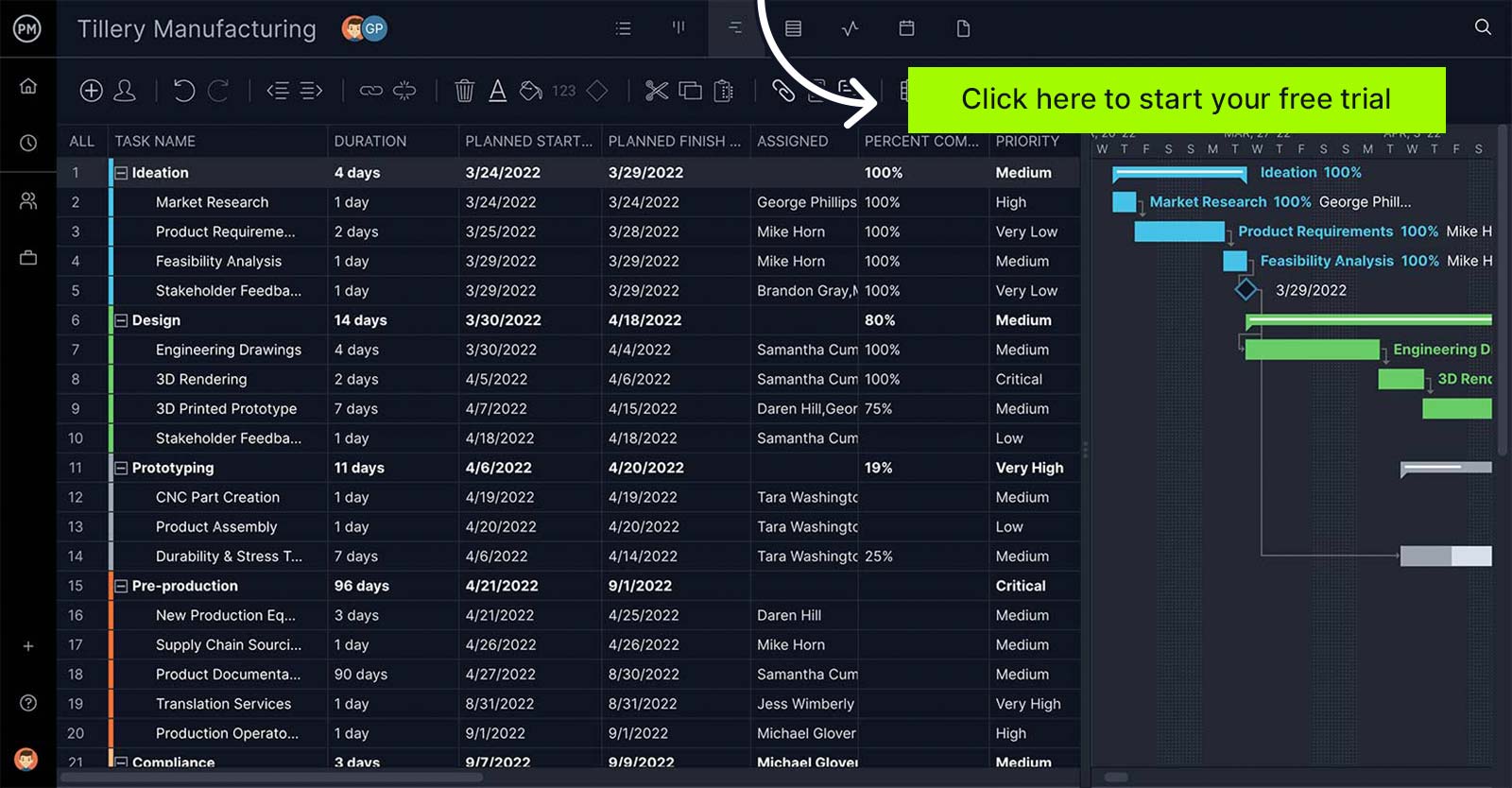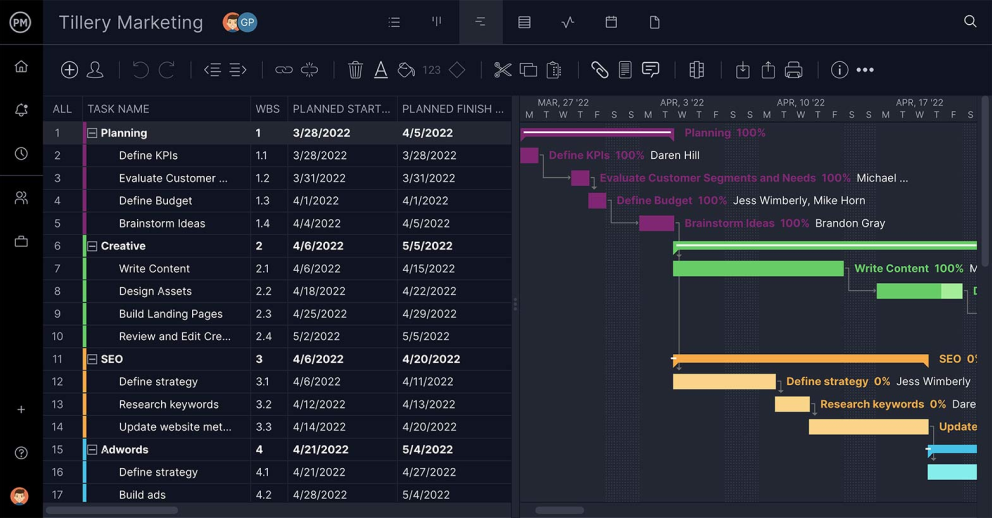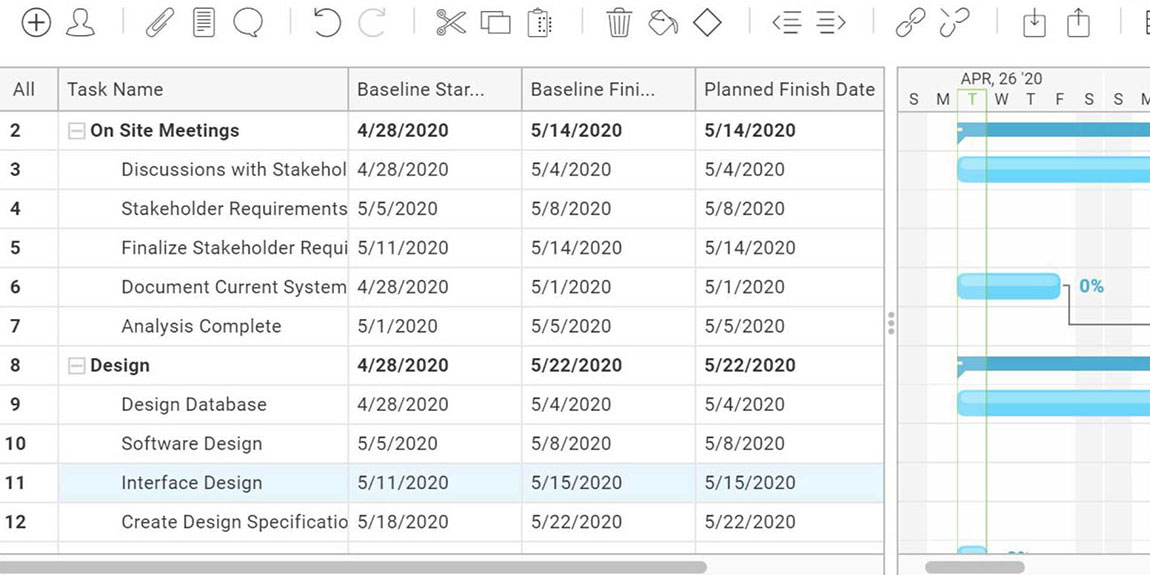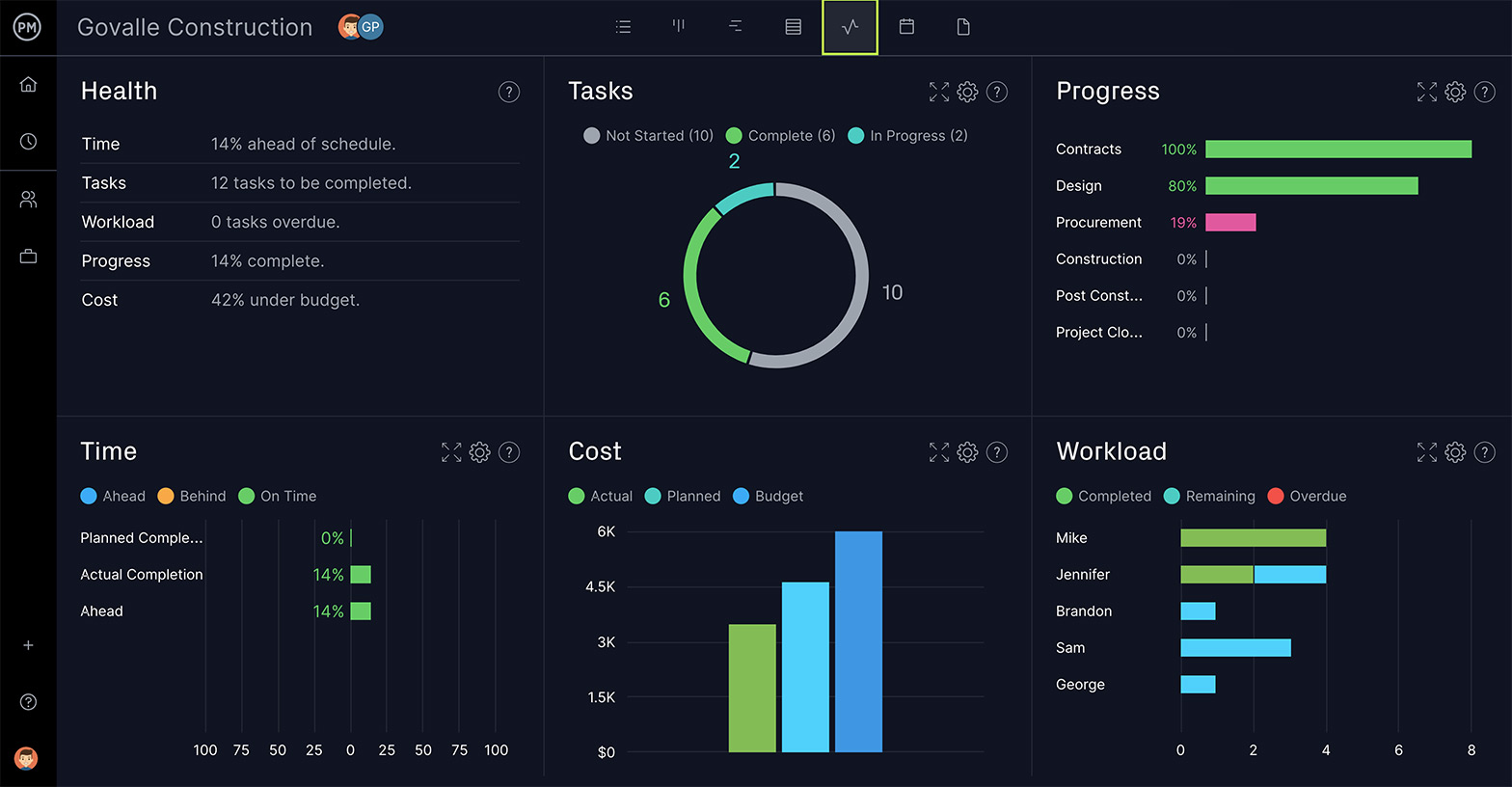If you’re looking to start or grow a business (or just keep a business profitable), you need a business plan. But not all plans are the same. If you need to define your business and its objectives, you need to use organizational planning.
That planning provides a clear path forward. When you organize the various departments of your business, everyone knows what their function is—and the tasks and processes necessary to achieve your business goals.
What Is Organizational Planning?
Organizational planning is how business owners organize the day-to-day operations of a business. This can range from simple things, like the company’s reason for existence, to more complex considerations, like setting goals to realize a specific objective. You use the organizational plan as a framework for creating tasks that, when executed, will allow the company to achieve its goal.
Organizational planning is often used to improve a company’s overall business, but a company can direct it towards its workforce, finances or products. There are, therefore, various types of organizational planning goals; from workforce development and financial planning to products, services and expansion planning.
That’s a lot of data to organize. ProjectManager has interactive Gantt charts that help you organize all that information, create a functional plan and manage it successfully. Try ProjectManager today for free!

What Is an Organizational Plan?
An organizational plan is a strategic framework that outlines how a business or entity structures its operations to achieve its goals effectively. It defines the hierarchy, roles, responsibilities and workflow within the organization, ensuring that every department and team member understands their function and how their work contributes to the broader objectives.
This plan typically includes elements such as the organizational structure (e.g., functional, divisional, matrix), staffing strategies, communication protocols and processes for decision-making and accountability. An organizational plan helps ensure coordination across departments, improves resource allocation and supports long-term planning and adaptability in a changing business environment.
Why Organizational Planning Is Important
It goes without saying that the better you organize your company, the better your company performs. Organizational planning is important because it lets companies develop effective plans and achieve their stated goals.
Having an organizational plan is also helpful because a prepared company responds better to changes in the workplace. Furthermore, organization planning clarifies the roles, responsibilities and expectations of everyone in the company. This helps management make sure they’re meeting the determined benchmarks.
Because organizational planning creates a structure where relationships between teams and managers are clearly defined, it can also reveal where there are any shortcomings, issues or liabilities. The company can then resolve these hamstringing limitations.

Get your free
Gantt Chart Template
Use this free Gantt Chart Template to manage your projects better.
Get the Template
Key Areas of Organizational Planning
These phases of organizational planning are defined in these four processes:
- Strategic Planning: This is the big-picture view for the company. Here, you define the company goals. The goals must align with the overall mission, vision and values of the company. This process involves upper management, though you can bring employees into the discussion.
- Tactical Planning: Next, the discussion moves toward how to implement the developed plan. These are more short-term goals, usually no more than a year in duration. This is where middle management takes the ball, in terms of creating plans and marketing campaigns.
- Operational Planning: Now we’ve come to the day-to-day operations necessary to execute the tactical plan. This is where you set up work schedules, policies, rules and regulations for employees. You also assign specific tasks and create a protocol for tracking work.
- Contingency Planning: It’s important to have a backup plan or two in case of unforeseen events or issues that make the original plan impossible. Spend time thinking of possible risks and responses. Events include natural disasters, software malfunctions or the departure of a C-level executive from the company.
- Workforce Development: Workforce development focuses on enhancing employee skills, knowledge and capabilities through training, mentorship and career growth programs. It ensures the organization remains competitive by cultivating talent, increasing productivity and preparing the workforce to meet current and future operational demands in alignment with strategic business goals.
- Succession Planning: Succession planning identifies and develops internal talent to fill key leadership or critical roles in the future. It mitigates disruption from unexpected departures, supports long-term continuity and fosters leadership pipelines. Effective succession planning aligns with organizational strategy and ensures business resilience through proactive talent management.
Organizational Planning Process
Organizational planning is the structured effort of aligning an organization’s goals with its internal capabilities and external environment. It involves setting long-term direction, allocating resources and defining clear steps to achieve strategic objectives. This process ensures that an organization operates efficiently and remains adaptable to changing business landscapes. Below are the key components that form the backbone of an effective organizational planning process.
Define the Mission and Vision of the Organization
The mission and vision statements articulate the organization’s purpose and long-term aspirations. The mission defines what the organization does, who it serves and how it delivers value. The vision outlines where the organization aims to be in the future. Together, they serve as a compass that guides all planning and decision-making efforts.
Conduct a SWOT Analysis
A SWOT (strengths, weaknesses, opportunities and threats) analysis, also known as a situational analysis, evaluates the organization’s internal capabilities and external market conditions. It helps identify competitive advantages, areas for improvement and external challenges or opportunities. This assessment informs strategic choices and prepares the organization for proactive decision-making.
Create a Strategic Plan
A strategic plan sets the organization’s long-term goals and outlines the major initiatives required to achieve them. It addresses overarching priorities, allocates key resources and establishes performance benchmarks. The strategic plan aligns all departments under a unified direction and lays the foundation for more detailed planning.
Create a Tactical Plan
A tactical plan breaks down the strategic plan into specific initiatives assigned to departments or business units. It focuses on mid-term objectives, typically over a one–three year timeframe, and outlines the steps each team must take to support the broader strategy. Tactical planning ensures cross-functional coordination and accountability.
Create an Operational Plan
The operational plan details the short-term activities, daily operations and workflow required to meet tactical goals. It includes schedules, staffing needs, task assignments and process guidelines. This plan ensures that the organization’s routine activities are aligned with strategic and tactical goals.
Establish an Organizational Structure
The organizational structure defines the hierarchy, reporting relationships and communication flow within the organization. It specifies roles and responsibilities across departments, enabling clear decision-making, accountability and collaboration. Choosing the right structure—functional, divisional, matrix, or flat—impacts organizational agility and efficiency.
Assess Resource Needs and Make an Operational Budget
This step involves identifying the human, technological and financial resources required to execute operational and tactical plans. An operational budget allocates funds to departments based on priorities and expected outcomes. Proper resource assessment ensures sustainability and prevents resource shortages or overspending.
Establish Standard Operating Procedures
Standard Operating Procedures (SOPs) are formalized guidelines for performing routine tasks. SOPs help ensure consistency, compliance and quality across the organization. They reduce training time, prevent errors and support continuous improvement by documenting best practices.
Define Key Performance Indicators (KPIs) for All Business Departments
KPIs are measurable values used to track the effectiveness and efficiency of different departments. Each department should have relevant KPIs aligned with organizational goals, such as customer satisfaction, revenue growth or project completion rates. These metrics allow leadership to monitor progress and make informed adjustments.
How to Make an Organizational Plan
The four phases of the organizational planning process create a framework, but there are different steps when making an organizational plan:
- Start with the goals and objectives of the company: Where do you want to be in the short- and long-term?
Then, assemble a team to lead the execution, tracking and progress of the plan. - Create a chart that illustrates the organizational structure of the plan: Share it with the whole company and keep them updated on progress as you hit milestones set for the long- and short-term.
- Define the company goals and objectives: Make this a detailed list to help everyone understand the goals and objectives, as well as their part in realizing them.
- Create a task list with roles for everyone on your team: Assign them tasks and make sure the team understands what is expected of them.
- Review where the company is currently: What processes are in place at this moment? Reviewing this allows the team to see what they need to do to reach the company growth targets.
- Scenario Planning: Use scenario planning to plan future strategic initiatives, make changes to the overall business model or any other actions that will allow the company to be more competitive
- Take what you’ve collected and put it in a document: Use this to track progress when you execute the organizational plan.
What Should Be Included in an Organizational Plan?
Now that we’ve gone over the basic steps in the organizational planning process, let’s now dive into the key elements of an organizational plan document.
1. Executive Summary
A concise overview highlighting the plan’s purpose, scope, and expected impact. It summarizes key goals, strategic priorities, and the overall approach. The executive summary is often written last but appears first to give stakeholders a clear, high-level understanding of the plan’s intent and structure.
2. Mission, Vision and Core Values
These foundational statements define why the organization exists, where it aspires to go, and what principles guide its behavior. Together, they inform decision-making, shape company culture, and unify teams around a shared identity. Clear, inspiring statements provide direction and align internal and external stakeholders.
3. Strategic Objectives
Strategic objectives are measurable long-term goals that guide the organization toward its vision. They focus on growth, performance, innovation, and market position. These objectives provide clarity, help prioritize initiatives, and align all departments with the company’s future direction. They form the basis of actionable plans.
4. Organizational Structure
This outlines how the organization is arranged, including roles, departments, and reporting relationships. It defines how authority flows and how teams collaborate. A clear structure promotes accountability, efficient communication, and operational clarity, ensuring everyone understands their role and where they fit in the organization.
5. Workforce and Staffing Plan
Details current staffing levels, projected needs, and talent strategies. It covers hiring plans, skill gaps, training programs, and succession planning. This section ensures the organization is equipped with the right people in the right roles to achieve its objectives efficiently and sustainably over time.
6. Operational Plan
Translates strategic objectives into specific actions at the department level. It includes daily operations, key initiatives, timelines, and resource allocations. This section ensures coordination across teams, tracks progress against milestones, and serves as a roadmap for executing the organization’s short- and medium-term goals.
7. Financial Plan
Outlines the budget, funding sources, revenue forecasts, and cost estimates. It includes financial strategies for sustainability and growth. This section helps manage resources wisely, evaluate investment needs, and ensure alignment between financial decisions and organizational priorities to maintain fiscal health and accountability.
8. Technology and Infrastructure Plan
Covers the systems, tools, and facilities needed to support operations. It includes current technology, planned upgrades, and IT governance. This ensures infrastructure aligns with strategic goals, supports productivity, and addresses security, scalability, and innovation to maintain competitiveness and operational efficiency.
9. Risk Management Plan
Identifies potential internal and external risks to the organization’s success. It includes assessments, impact analysis, mitigation strategies, and contingency plans. A robust risk management plan helps protect assets, ensures business continuity, and prepares the organization to respond effectively to uncertainties and disruptions.
10. Performance Metrics and KPIs
Defines how progress and success will be measured. It includes specific, quantifiable indicators aligned with strategic objectives. Tracking KPIs allows for real-time performance monitoring, informed decision-making, and continuous improvement. This section ensures accountability and enables adjustments to stay on target.
11. Communication Plan
Outlines how information will be shared internally and externally. It includes communication channels, messaging strategies, and stakeholder engagement. This ensures transparency, boosts morale, aligns teams, and helps manage change effectively by keeping everyone informed and involved in organizational developments.
12. Review and Evaluation Schedule
Defines how and when the plan’s effectiveness will be assessed. It includes review intervals, responsible parties, and feedback mechanisms. Regular evaluations allow for course correction, validate progress toward goals, and promote continuous improvement across the organization through informed strategic adjustments.
How to Communicate Your Organizational Plan to the Team
Once you’ve created an organizational plan, you need to communicate it to the team. This is a crucial step. If you implement a plan without having everyone understand it, you may have problems that might derail the whole plan.
One way to get everyone on the same page is to call a company-wide meeting. Have a tight agenda that details the organizational plan, and get feedback from those in attendance. You can also create a one-sheet, and distribute it before or during the meeting.
If your company has project management software, you can bring the whole company in on the organizational plan, assign tasks and communicate through the tool if they have any questions. Then, when you implement the organizational plan, you can track progress and ensure everyone stays in communication.
How ProjectManager Helps with Organizational Planning
ProjectManager is a cloud-based tool with multiple project views that allow managers and their teams to choose the tool that they want to work with. No matter which they use, data is shared across the platform so everyone is working from the most current data.
Lay Out Entire Plans on Gantt Charts
Begin planning by organizing tasks and adding deadlines. Gantt charts are the traditional tool to get all your work on a timeline, but not all Gantt charts are the same. ProjectManager’s Gantt chart project view lets you to filter for the critical path without any complicated calculations. You see what is essential, and what you can skip, if time and money become an issue.

Set Baselines to Track Progress
Once the schedule is completed, you can set a baseline. This captures your planned effort around tasks, resource cost and more. That means, once you start to execute your plan, you can compare the actual effort to your planned effort to make sure you’re keeping on track.

Get Real-Time Data from Dashboards and Reports
To keep an eye on progress and performance, use ProjectManager’s live dashboard. It collects data, automatically calculates it and displays it in easy-to-read graphs and charts. Unlike other software, you don’t need to configure the dashboard; it’s up and running from the start.

Related Organizational Planning Content
- Organizational Chart Template
- Scenario Planning Template
- Organizational Project Management (OPM) Basics
- What Is Organizational Strategy in Business? (Examples Included)
- Organizational Resources Basics: Managing Company Resources
- Matrix Organizational Structure – A Quick Guide
- What Is Organization Design? Types, Principles & More
- Organizational Process Assets: Definitions, Examples & Templates
ProjectManager is award-winning software that has everything you need to plan, execute and track your organizational plan. With timesheets, automated notifications and kanban boards, managers get transparency and teams have the autonomy to manage their tasks. See how ProjectManager can help you with organizational planning and take a free trial today.


